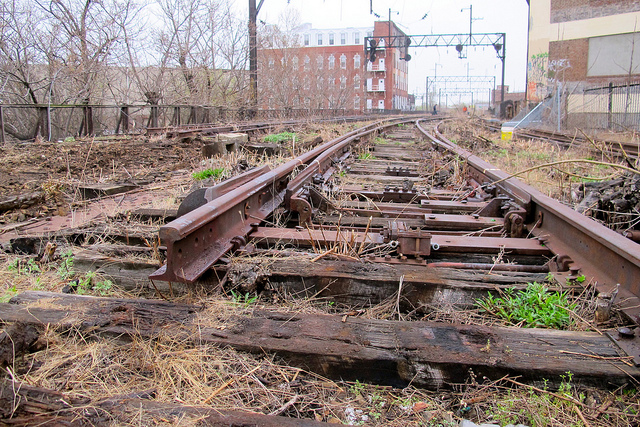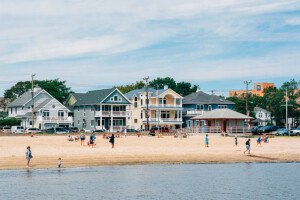Property’s Philebrity Awards Picks
Each year the website Philebrity solicits votes for its annual awards, which include categories ranging from General Fabulousness to Non-Profit of the Year. This year there are several contenders who speak to Property’s mission. They are people and organizations who make significant, consistent contributions to the discourse around Philadelphia’s built environment, who promote design and architecture, who advocate to make the city a better place to live, who educate its residents. We can’t speak to Phoodie of the Year, but we chose our winners in categories we feel are relevant.

Photo by Eyes on the Street/Plan Philly via Flickr.
Non-Profit of the Year: Friends of the Rail Park
This has been a tremendous year for all of the nominees in this category, but the two separate groups advocating for the development of the Reading Viaduct did something very Quaker in spirit — and extremely productive to meet their goals — this year: They merged into one group. Anyone who’s been involved with a non-profit with passionate people knows how tough that can be, but the cooperative venture has heightened the profile of the cause and strengthened what has become a single vision. Wednesday’s benefit concert at Union Transfer highlights the direction in which the group is headed when it comes to its profile. It’s a great bill under any circumstances: Sun Ra, the Walkmen, Sharon Van Etten, Light Heat, Birdie Busch, and more.
Festival/Gathering of the Year: PHS Pop-Up Garden + Hidden City Festival (Tie)
If one adheres strictly to the description of this award — “Which festival or gathering of the last year brought people together better than any other?” — the PHS Pop-Up Garden would have a leg up. After all, the beautifully designed space was centrally located, a pleasure to be in, and served beer. It was the ideal spot for sunny afternoon happy hours, and people were endlessly texting each other to meet there. On a more serious note, it ably demonstrated the endless potential of vacant spaces and probably said something of important about horticultural matters, though…beer.
 But the Hidden City Festival, which featured site-specific artwork in nine different locations across the city, merits praise as well. Some of the sites are off-limits to the public, and opening them up allowed visitors to see wondrous architecture and learn about city history. In this case, the transformative art projects demonstrated the endless potential of vacant spaces of the built variety. The festival also had civic-minded goals: to bring some of the historic communities once anchored by the buildings back to life. The Hidden City Festival may not have brought as many people together at precisely the same moment as they’d gather in the PHS Pop-Up, but in terms of revealing the richness of the urban landscape, it was peerless.
But the Hidden City Festival, which featured site-specific artwork in nine different locations across the city, merits praise as well. Some of the sites are off-limits to the public, and opening them up allowed visitors to see wondrous architecture and learn about city history. In this case, the transformative art projects demonstrated the endless potential of vacant spaces of the built variety. The festival also had civic-minded goals: to bring some of the historic communities once anchored by the buildings back to life. The Hidden City Festival may not have brought as many people together at precisely the same moment as they’d gather in the PHS Pop-Up, but in terms of revealing the richness of the urban landscape, it was peerless.
Philadelphia Writer of the Year: Inga Saffron
Inquirer architecture critic Inga Saffron stimulates a ton of conversation with her Changing Skyline column and her other writing about buildings and related issues for that paper. When she doesn’t care for a project, she is emphatic but fair. When she does like something, she never fawns. Her writing is tone-perfect for insiders like architects and designers but is equally accessible to laypeople. That balance probably has something to do with the breadth of her chosen subject matter, as well, which runs the gamut from straight-ahead critiques of new spaces to commentary on larger issues like neighborhood development.
This year she wrote about the vandalism of the Chestnut Hill Friends’ new meetinghouse, respectfully reiterating in that instance, as in others, that the building trades’ thuggish actions are “the sort of behavior that diminishes the unions’ valid attempts to remain relevant.” Her writing about the unions with clear-eyed dispassion is greatly appreciated, as it cuts through the more preposterous narratives that often come out of union-related battles.
Saffron’s national reputation is one of the best things the Inquirer has going for it. Let’s hope whoever owns it/edits the paper in the future understands that.
Do-Gooder of the Year: Adam Bruckner
Many of the cracks in this city are literal — we see them in our old sidewalks as we stroll the colonial streets. But the other kind — the proverbial cracks people fall through — are the most treacherous, and have an impact not only on the affected individuals but on the fabric of the city as a whole. By addressing the intransigent problem of I.D. and basic resources, Adam Bruckner is filling in those cracks. Don’t believe us? See the video below:
To vote, click on the image at the top of the post.


